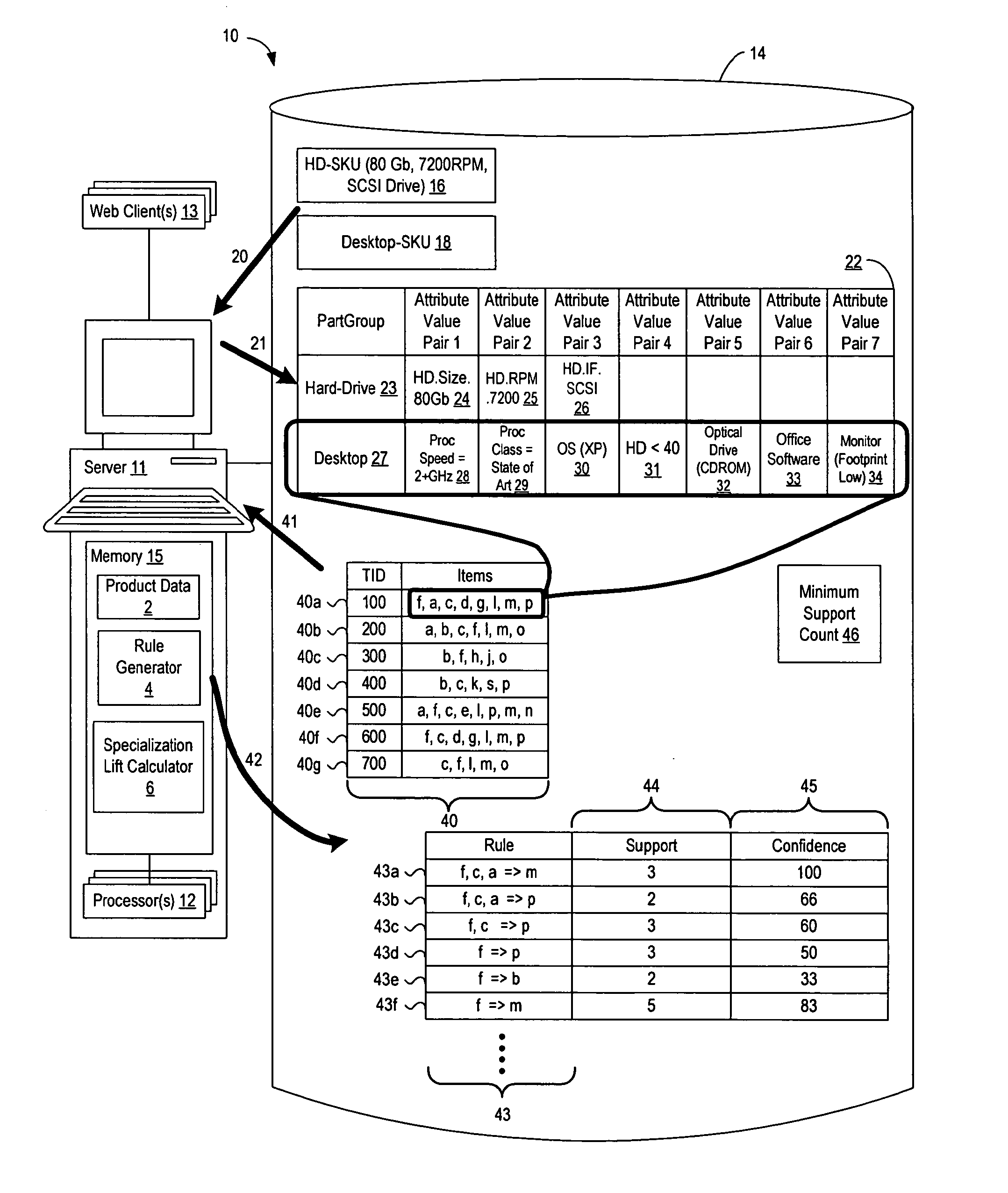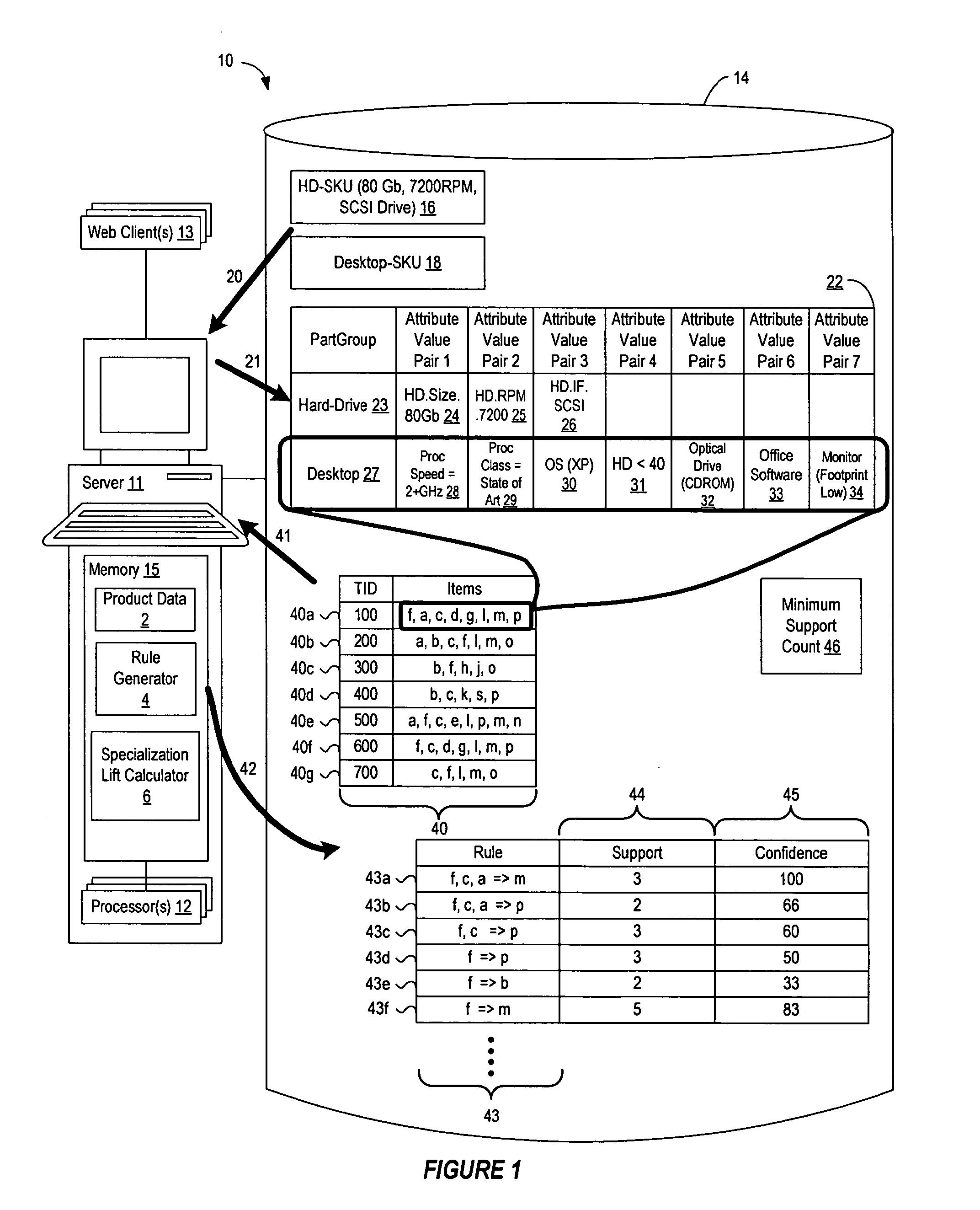System and Method for Efficiently Generating Association Rules
a technology of association rules and system components, applied in the field of database analysis, can solve the problems of insufficient information for developing meaningful association rules for complex products, high computational cost of candidate set generation, and insufficient information for conventional data mining techniques using item data at the unit number level, etc., to improve the performance of the rule set at runtime, improve the effect of pattern correlation and reducing the number of rules that are evaluated
- Summary
- Abstract
- Description
- Claims
- Application Information
AI Technical Summary
Benefits of technology
Problems solved by technology
Method used
Image
Examples
Embodiment Construction
[0021]An efficient database mining method and apparatus is described for generating attribute-based frequent patterns from transaction databases, efficiently deriving association rules from the detailed frequent patterns, and removing redundancies from the derived rules. While various details are set forth in the following description, it will be appreciated that the present invention may be practiced without these specific details. For example, selected aspects are shown in block diagram form, rather than in detail, in order to avoid obscuring the present invention. Some portions of the detailed descriptions provided herein are presented in terms of algorithms or operations on data within a computer memory. Such descriptions and representations are used by those skilled in the data processing arts to describe and convey the substance of their work to others skilled in the art. In general, an algorithm refers to a self-consistent sequence of steps leading to a desired result, where ...
PUM
 Login to View More
Login to View More Abstract
Description
Claims
Application Information
 Login to View More
Login to View More - R&D
- Intellectual Property
- Life Sciences
- Materials
- Tech Scout
- Unparalleled Data Quality
- Higher Quality Content
- 60% Fewer Hallucinations
Browse by: Latest US Patents, China's latest patents, Technical Efficacy Thesaurus, Application Domain, Technology Topic, Popular Technical Reports.
© 2025 PatSnap. All rights reserved.Legal|Privacy policy|Modern Slavery Act Transparency Statement|Sitemap|About US| Contact US: help@patsnap.com



